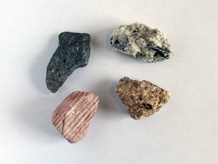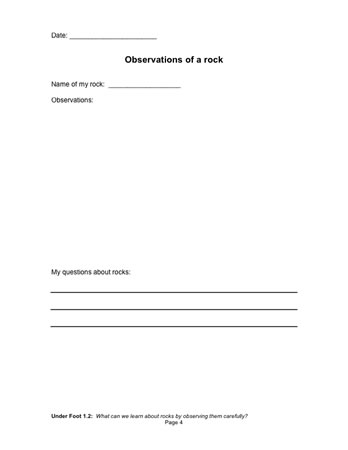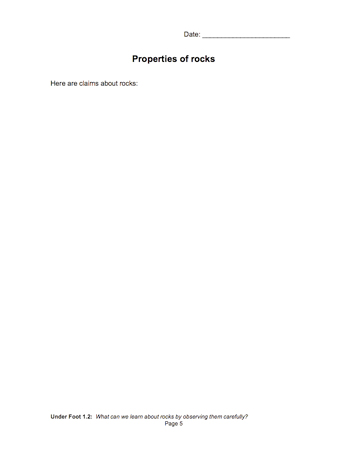What can we learn about rocks by observing them carefully?
Plan Investigation 1.2

Have you ever come across a rock that seemed too interesting to pass by, picked it up, and slipped it into your pocket? Chances are your students have, too.
In this investigation, students focus on a set of four rocks. They use magnifiers to explore the rocks closely and they record their observations about one of the rocks in their notebook. After sharing their observations, students develop some general statements that apply to all the rocks.
By the end of this investigation, students will understand that rocks are objects that are composed of various materials called minerals. They will also begin to distinguish properties of rocks (e.g., size and weight) from properties of the minerals they are made of (e.g., color and sparkle).
Learning Goals
- Understand the difference between rocks (objects) and minerals (the materials that rocks are made of)
- Discover some properties of rocks and minerals by looking at them closely
| Sequence of experiences | ||
|---|---|---|
| 1. Ask the question | All Class | 5 Mins |
| 2. Explore the rocks | Small Groups | 15 Mins |
| 3. Share data | All Class | 10 Mins |
| 4. Make meaning | Discussion | 15 Mins |
Materials and Preparation

- Post the investigation question in a place where all students can see it.
- Make a class chart for recording observations about rocks and post it in a place where all students can see it; an example is found in Step 3.
- 1 plate of 4 rocks: sandstone, granite, conglomerate, and basalt; this set of rocks will also be used in the next investigation
- 2 Rock Reference sheets
- 4 magnifying glasses
- 1 piece of quartz, distributed in Step 4







